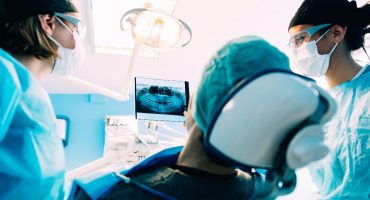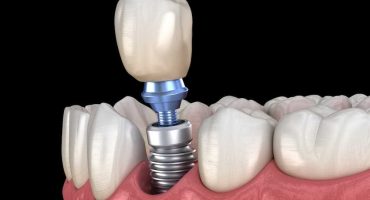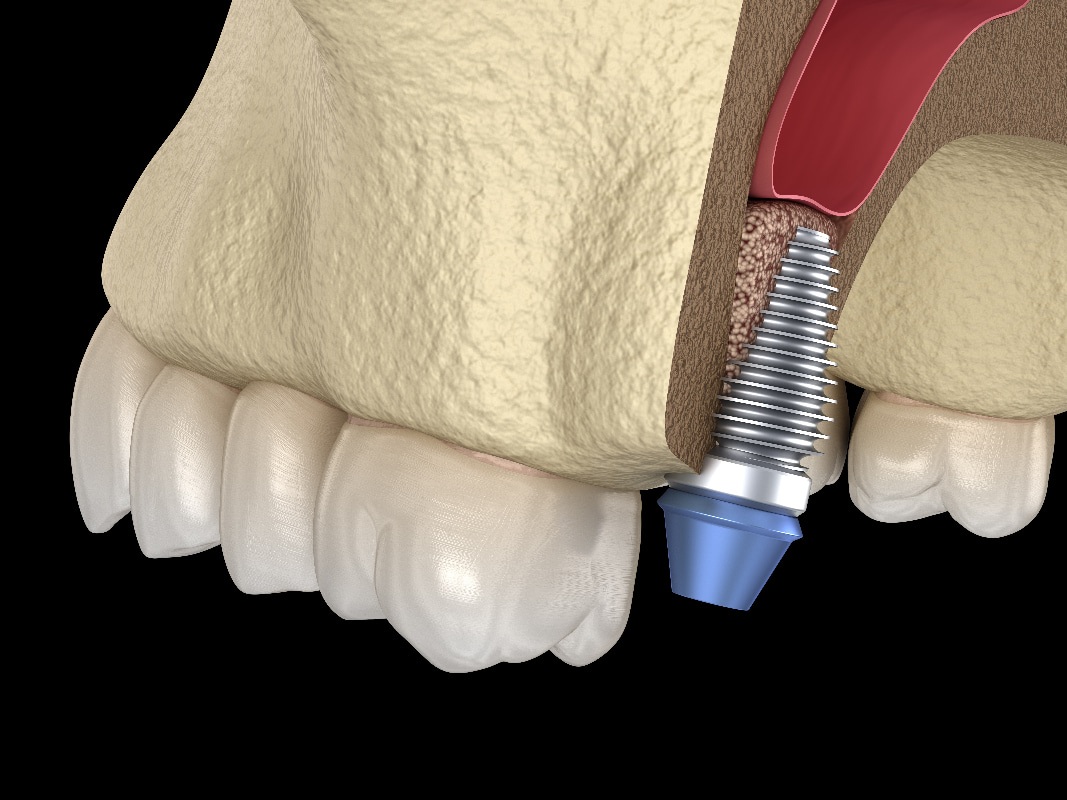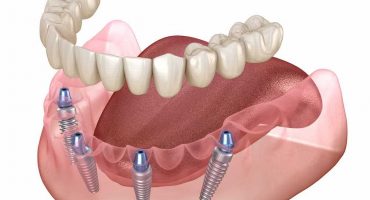Many people want a fixed denture that does not look different from their own teeth. An implant is ideally suited for this purpose. A stable and healthy jaw bone is the prerequisite for such an intervention. Often, however, the bone has regressed due to missing teeth and does not provide sufficient support for an implant. A sinus lift accordingly has the task of the rebuilding jawbone in the upper jaw. Your orthodontist then has the opportunity to bring the dentures stable.
Definition Sinus Lift
The sinus lift owes its name to the Latin name for the maxillary sinus (maxillary sinus). He defines an orthodontic procedure in which the doctor rebuilds a previously too thin jawbone.
The lack of bone substance has several causes. The loss of teeth that are not replaced promptly, is the primary problem for the degradation. Even a higher age, various dental diseases and periodontitis are considered causative agents.
With a sinus lift your treating dentist removes the maxillary sinus mucosa slightly from the wall and raises it. The result is a cavity which is filled with bone substitute material and counteracts in this way the lack of bone substance.
In Implantology, the sinus lift is a common means of the preparing jawbone for the implants to be inserted. Too thin antrum floor is not suitable to receive a dental implant. It does not provide sufficient support for implantation. The sinus lift is exclusively on the upper jawbone. For the bone augmentation on the lower jaw other methods are used.
Need for a sinus lift
If you are interested in a fixed prosthesis, the trusted dentist will first check your bone density. It allows him to determine the condition of your jawbone and to initiate further treatment steps. If the tooth to be replaced is missing for a short time, you have in principle good prospects of getting the desired implant without the need for a sinus lift. But the presence of other diseases, such as an unfavorable metabolic process, osteoporosis or periodontitis speak for the possibility of bone loss.
If you need to build up your, your doctor will detailed radiographic examination bones perform to assess the bone in detail. For this purpose, a so-called panoramic tomography takes place or even a three-dimensional representation by a special volume tomograph. Depending on the present result, a corresponding sinus lift method is used.
Different methods
There are two variants of the sinus lift, the internal and the external sinus lift. Both procedures are carried out in a minimally invasive and outpatient setting in the practice of your treating physician, and both focus on lifting the floor of the maxillary sinus.
The internal sinus lift is used when only a small elevation of the floor of the maxillary sinus is required. This is the case for a limited bone loss with low height deficit. The access for the procedure is the drilling channel needed for the future dental implant. The term "internal" means that the treatment is performed without an additional second surgical area. The implant will be used in the same treatment session.
The external sinus lift is available for procedures that require a larger boost. In this procedure, there is a finding with significantly larger bone defects. For this purpose, "external", ie from the outside, opens up another operational access. This is located laterally in the posterior region of the jaw. The healing time for bone formation is six to nine months.
Procedure of the treatment
When the internal sinus lift is initially a bore until just before the maxillary sinus. It is also used for the actual implant. The thin bone layer is opened a little bit to lift the mucous membrane. In the cavity thus formed the surgeon fills a special bone material. The material used is replaced in the so-called healing phase in the course of rebuilding processes of the body by the body's own material. The increased bone due to the structure is suitable for dental implants.
In the case of the external sinus lift, the gums are folded backwards during the operation. From the side of the oral forecourt, the doctor drills access to the maxillary sinus. The membrane is loosened and lifted slightly from the floor of the antrum, allowing relining with bone substitute material. Here, too, a formation of the body's own bone substance takes place in the further course.
Potential Risks
As with any surgery, a sinus lift is inherently subject to risks that your doctor will refer you to. However, they are manageable and can be minimized by various measures. Among the rare complications of an intervention on the jaw include all those points that are associated with a wound. These include, for example,
- infections,
- inflammatory processes,
- bleeding or
- swelling following the procedure.
They are all easily recognizable and easy to handle. In addition, you have the opportunity to reduce risks associated with OR surgery.
- First and foremost, this requires careful oral hygiene so that inflammation does not even occur.
- Swelling is reduced by cooling the affected area as directed by your doctor.
- Refrain from the use of nicotine and alcohol as well as very hot food and drinks in the days after the forego procedure, you will facilitate wound healing.
Also,avoiding physical exertion and adherence to follow-up appointments are essential for risk mitigation.
Cost of a sinus lift
General information about the costs associated with a sinus lift can not be obtained. They depend essentially on your individual findings. The condition of your jawbone determines the specific operation procedure and thus the necessary expenses. In addition to the actual scope of therapy, this also includes the costs for the bone substitute material. The duration of the intervention is also a component that determines the price. Depending on the starting position and without the fixed denture used following the sinus lift, the amount will be in the three- to four-digit range. The statutory health insurance companies usually do not cover these costs.
Conclusion
In today's time with the complex methods of maxillofacial surgery, you have the opportunity to get a fixed dentures even in unfavorable starting position. State-of-the-art bone replacement materials stimulate bone growth and result in amore stable jawbone suitable for receiving implants. Following the loss of loss timely treatment teeth will reduce bone. The sooner you try to find a denture, the lower is usually the effort required for the bone structure.
Weitere Beiträge

Navigated Implantology
Digital imaging techniques are becoming increasingly important in dentistry. They allow precisely manufactured, perfectly fitting dentures and facilitate the work of the process involved easier. An enormous benefit for patients is the predictability of the treatment.

CAMLOG-Implant
The company CAMLOG is one of the leading manufacturers in the field of implantology and produces dentures for the highest demands. In Wimsheim near Stuttgart, both complete systems and individual, implant-supported dental prosthesis products are manufactured.


